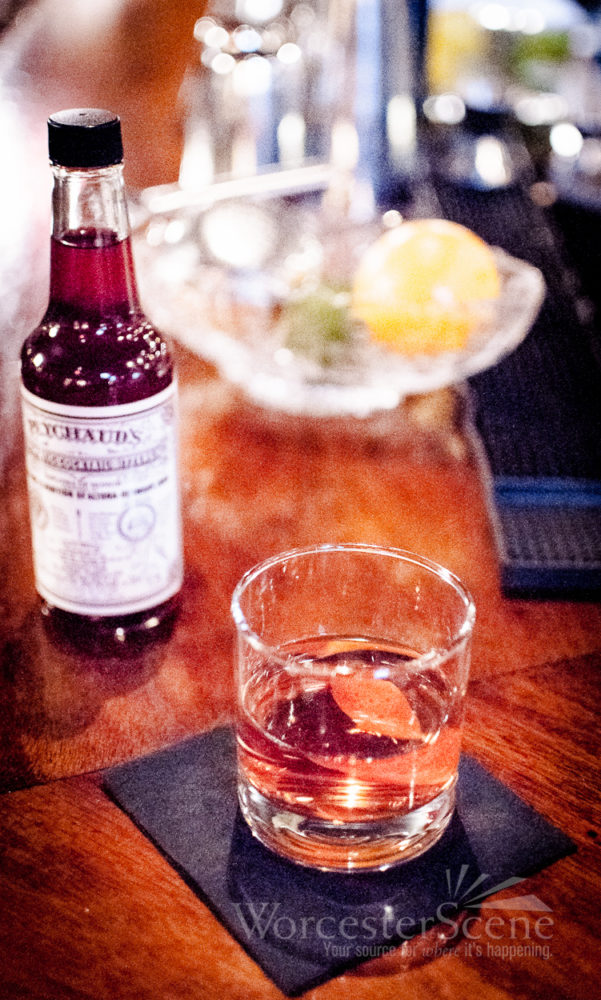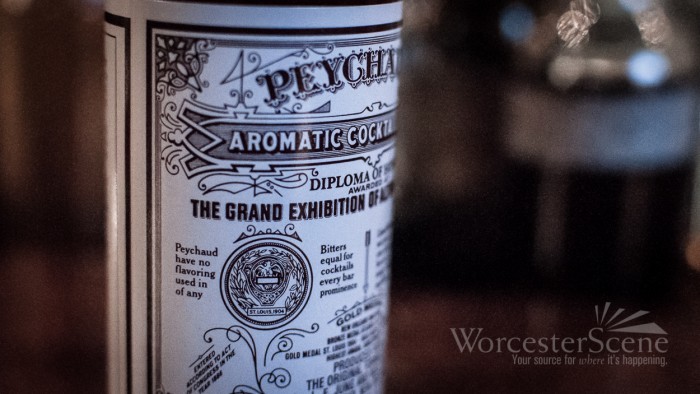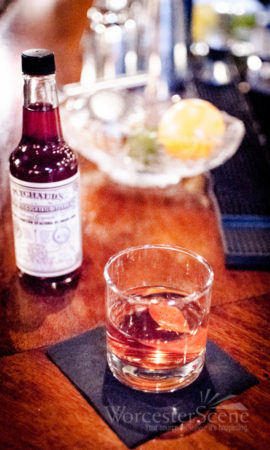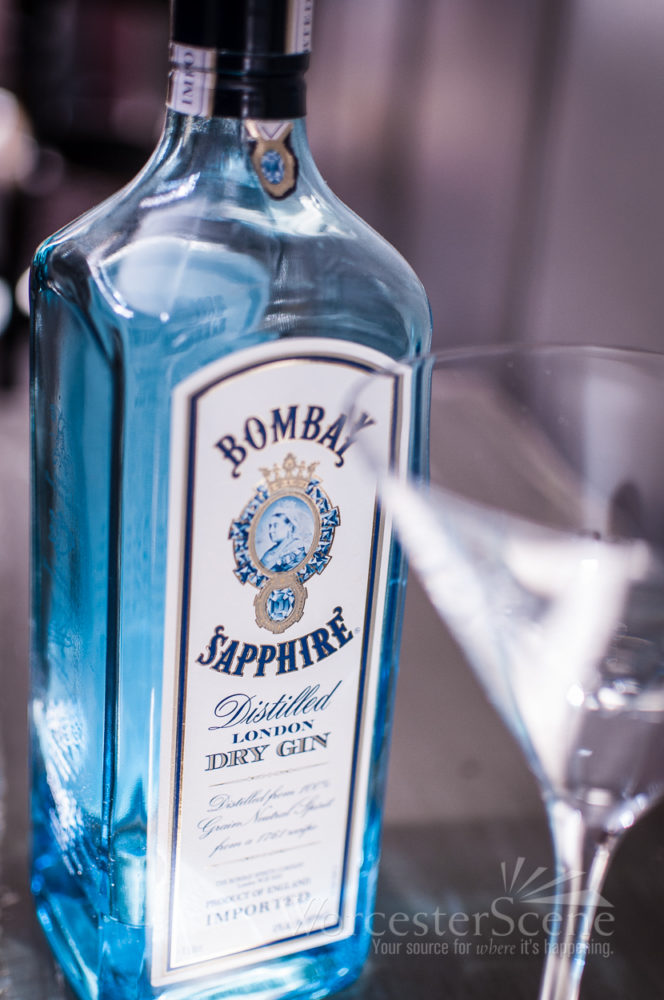
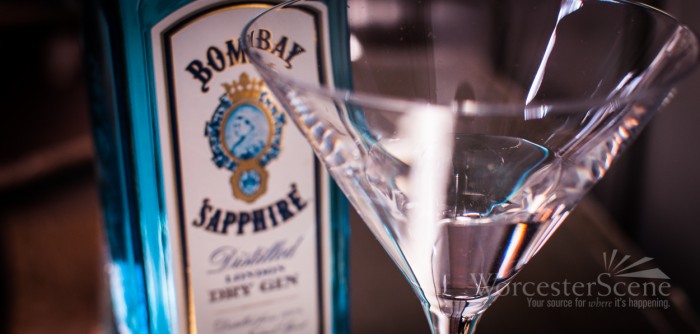 “Three measures of Gordon’s, one of vodka, half a measure of Kina Lillet. Shake it very well until it’s ice-cold, then add a large thin slice of lemon peel. Got it?” And so the legend was born. Contrary to popular belief, the famous special agent 007 did not always drink a vodka martini “shaken, not stirred.” In fact, in Ian Flemming’s first novel, Casino Royale, Bond orders the aforementioned concoction, known as a Vesper martini. Aptly named after his love interest, Vesper Lynd. Fans of 007 will also know that he never orders a Vesper martini after this novel, due in part, to the fact that the love of his life double crosses him, and she dies at the end. A bitter ending, much like the drink (thanks to half a measure of Kina Lillet). Bond’s last words in the book are “the bitch is dead now.” Nonetheless, the drink lives on, and is a fantastically bright and refreshing cocktail, perfect for the springtime.
“Three measures of Gordon’s, one of vodka, half a measure of Kina Lillet. Shake it very well until it’s ice-cold, then add a large thin slice of lemon peel. Got it?” And so the legend was born. Contrary to popular belief, the famous special agent 007 did not always drink a vodka martini “shaken, not stirred.” In fact, in Ian Flemming’s first novel, Casino Royale, Bond orders the aforementioned concoction, known as a Vesper martini. Aptly named after his love interest, Vesper Lynd. Fans of 007 will also know that he never orders a Vesper martini after this novel, due in part, to the fact that the love of his life double crosses him, and she dies at the end. A bitter ending, much like the drink (thanks to half a measure of Kina Lillet). Bond’s last words in the book are “the bitch is dead now.” Nonetheless, the drink lives on, and is a fantastically bright and refreshing cocktail, perfect for the springtime.
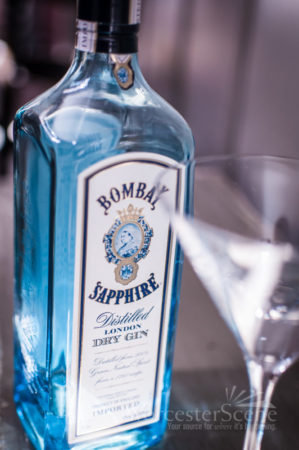 As winter takes its last breath and blustery cold nights give way to warmer days ahead, gin becomes a perfect transition for your palate. Distilled with many different herbs, roots, and spices, such as juniper, coriander, and orange peel, gin takes on many different flavors. Although some flavors are more assertive than others, it are these same flavors that give gin its versatility and depth when mixing with other ingredients. Don’t let the Tanqueray bottle in your parent’s liquor cabinet scare you, not all gins are as juniper forward as that one. It is the juniper that people describe when they cringe at me from across the bar and remember gin tasting like a Christmas tree. In fact, there are many milder styles of gin out there that you might enjoy.
As winter takes its last breath and blustery cold nights give way to warmer days ahead, gin becomes a perfect transition for your palate. Distilled with many different herbs, roots, and spices, such as juniper, coriander, and orange peel, gin takes on many different flavors. Although some flavors are more assertive than others, it are these same flavors that give gin its versatility and depth when mixing with other ingredients. Don’t let the Tanqueray bottle in your parent’s liquor cabinet scare you, not all gins are as juniper forward as that one. It is the juniper that people describe when they cringe at me from across the bar and remember gin tasting like a Christmas tree. In fact, there are many milder styles of gin out there that you might enjoy.
 Some of the more well-balanced and milder styles of gin out there are made in smaller batches including my personal favorite, Death’s Door gin. This particular gin is made in Wisconsin and is a perfect gin for mixing cocktails, as it won’t overpower the senses, and brings other ingredients to the forefront. Another popular gin, Hendrick’s Gin, actually uses cucumber and rose petals during distillation, to round out the juniper and other botanicals that make up this gin. This makes it extremely drinkable and has led to it’s rise in popularity (along with some clever marketing!).
Some of the more well-balanced and milder styles of gin out there are made in smaller batches including my personal favorite, Death’s Door gin. This particular gin is made in Wisconsin and is a perfect gin for mixing cocktails, as it won’t overpower the senses, and brings other ingredients to the forefront. Another popular gin, Hendrick’s Gin, actually uses cucumber and rose petals during distillation, to round out the juniper and other botanicals that make up this gin. This makes it extremely drinkable and has led to it’s rise in popularity (along with some clever marketing!).
While these are some of the popular gins now, we haven’t really touched on the ‘forefathers’ of gin. Some of the oldest styles of gin are sweeter and one, in particular, doesn’t resemble gin at all. The Genever style of gin is one of the oldest styles of gin and hails from Holland. This particular style has been produced since the 1600’s and uses malted wine, neutral grains, and botanicals. The spirit itself more closely resembles a brown spirit, such as bourbon or other whiskey, and is very complex. This makes it a great choice when trying to convert a gin drinker to whiskey, or vice a versa.
The sweeter style of gin that I mentioned earlier is known as Old Tom gin. Old Tom is sweeter than your London Dry styles like Gordon’s or Bombay Sapphire, yet a bit drier than the malty Genever style. One particular brand, known as Hayman’s Old Tom gin, has been around since the 1800’s, and is distilled in small batches in copper stills. The sweetness of this gin gives it a softer profile and makes it ideal for more delicate cocktails.
A couple of my favorite gin cocktails, the French 75, and the Tom Collins, are perfect for the warmer weather. The French 75 was named after a 75 millimeter machine gun the French used during World War I. They say the gun was very smooth, but packed quite a wallop! And although the drink only calls for an ounce of gin, it too packs a wallop (and is very smooth). I mention the other drink, the Tom Collins, because it is a legend in it’s own right. It would be hard to mention gin and cocktails without mentioning this concoction. Both drinks are simple, use few ingredients, and are extremely well balanced. Cheers!
French 75
- 1 oz. Gin (Bombay Sapphire or other London dry style)
- 1 oz. simple syrup
- ¾ oz. fresh squeezed lemon juice
- Shake ingredients and top with champagne or sparkling wine
Tom Collins
- 1.5 oz. Gin
- 1 0z simple syrup
- .5 oz Fresh squeezed lemon juice
- Shake ingredients and serve in Collins glass over ice. Top with club soda

